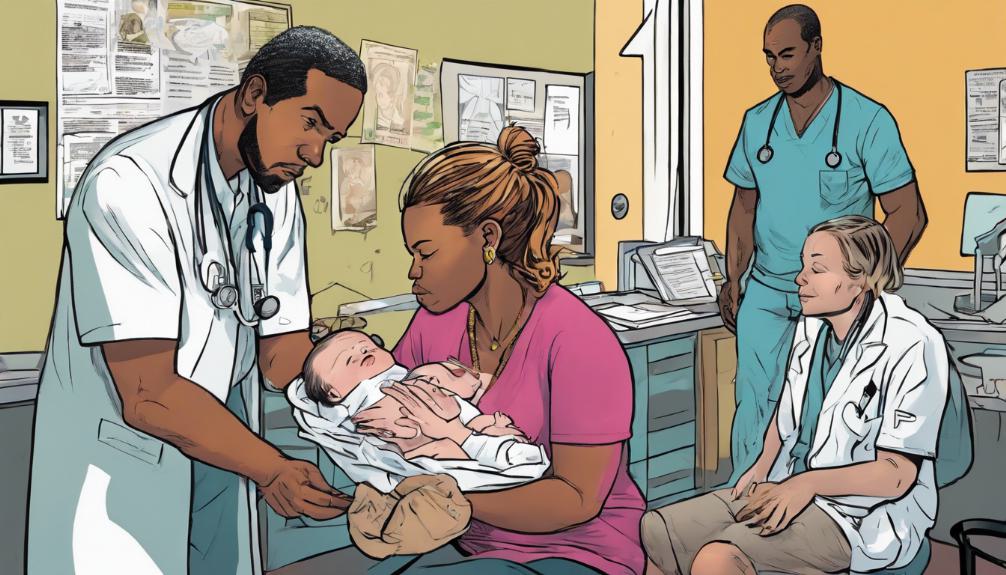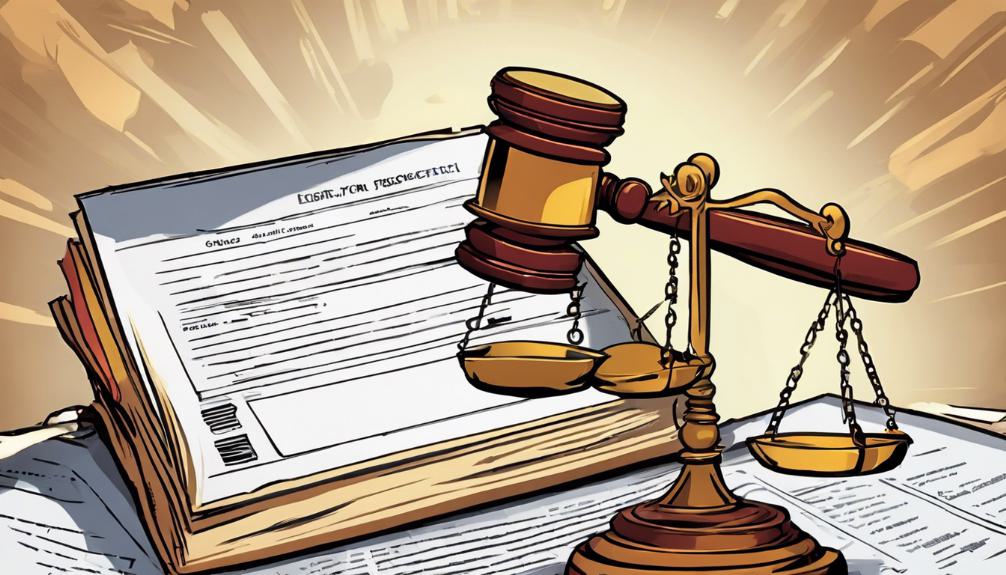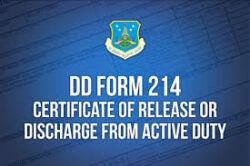Cerebral Palsy Lawsuit Cases: Has Your Baby, Infant, or Child Been Diagnosed With Cerebral Palsy?
The diagnosis of Cerebral Palsy in a newborn, infant, or child marks the beginning of a challenging journey for many families, intertwining emotional, physical, and financial complexities. As healthcare professionals grapple with the prevention and management of this condition, instances of negligence leading to such diagnoses raise critical legal questions and the potential for litigation. For families affected, understanding the nuances of Cerebral Palsy lawsuit cases becomes not just a matter of legal pursuit but a necessary step towards securing a semblance of justice and financial stability for their loved one's future. Explore the intricate landscape of legal recourse available for families navigating this daunting path.

Understanding Cerebral Palsy
Cerebral palsy, a neurological disorder affecting movement and balance, is a result of damage to the brain's cerebrum, leading to the paralysis of voluntary movements. This condition encompasses a group of permanent movement disorders that appear in early childhood. Signs and symptoms vary among individuals but generally include poor coordination, stiff and weak muscles, tremors, and in some cases, problems with sensation, vision, hearing, swallowing, and speaking. Despite cerebral palsy being a lifelong disability, it does not worsen over time. The prevalence in the United States highlights its significance, with approximately 800,000 people living with this condition. An estimated 3.3 out of every 1,000 babies are diagnosed, underscoring the necessity for awareness and understanding of cerebral palsy's impact on individuals and families.
Preventable Factors and Care

Understanding the underlying causes and risk factors of cerebral palsy highlights the importance of preventative measures and proper medical care during pregnancy and childbirth. Medical professionals, particularly obstetricians, play a pivotal role in identifying and mitigating risks such as low birth weight that can lead to cerebral palsy. Negligence during childbirth, such as failing to monitor the baby's oxygen level or properly handle birth complications, significantly increases the risk of developing cerebral palsy. Proactive and attentive care throughout the prenatal period and the birthing process can substantially reduce the incidence of cerebral palsy. It is paramount for healthcare providers to adhere to established medical protocols and guidelines to prevent the occurrence of cerebral palsy, underscoring the critical nature of proficient and vigilant medical care.
The Financial Toll

The economic burden of cerebral palsy on families and the healthcare system is substantial, with lifetime costs potentially exceeding $1,000,000 per individual. These costs encompass a wide range of expenses beyond direct medical treatments. Families often face significant outlays for mobility aids, home modifications to accommodate special needs, and special education services. Moreover, the financial impact is not limited to out-of-pocket expenses. There is also a considerable cost in terms of lost wages, both for individuals who have cerebral palsy and may be unable to work in certain capacities and for family members who may reduce their work hours or cease employment altogether to provide care. This multifaceted financial toll underscores the crucial need for comprehensive support and resources for affected families.
Treatment and Management

Effective treatment and management of cerebral palsy focus on maximizing the individual's independence and quality of life through a tailored combination of therapies and interventions. This multifaceted approach often includes physical therapy to enhance mobility and strength, occupational therapy to improve daily living skills, and speech therapy to address communication challenges. Specialized medical care may also be necessary for managing associated conditions such as muscle spasticity. Early intervention is crucial, as it can significantly influence the child's developmental trajectory. Adaptive equipment, such as customized wheelchairs and communication devices, plays a key role in fostering autonomy. Collaboration among healthcare professionals, educators, and families ensures a cohesive plan that addresses the unique needs of each individual with cerebral palsy, aiming for the highest possible functional independence.
Legal Rights and Recourse

While comprehensive care and treatment are paramount for managing cerebral palsy, families also have the option to explore legal recourse when medical negligence is believed to have contributed to the condition. Legal rights and recourse are vital components in addressing the financial and emotional burdens that come with cerebral palsy, especially when preventable factors during childbirth are identified. If negligence from medical professionals is established, affected families may be entitled to compensation. This compensation can significantly alleviate the lifetime costs associated with cerebral palsy, including medical treatments, therapy, and necessary home modifications. Understanding these legal rights is crucial for families seeking justice and financial relief in the face of a cerebral palsy diagnosis linked to medical malpractice.
Seeking Legal Assistance

Navigating the complexities of the legal system requires expert guidance, especially for families considering legal action in cerebral palsy cases linked to medical negligence. Seeking legal assistance is a critical step for those who believe their child's condition was preventable and resulted from professional oversight or errors during childbirth. Experienced birth injury lawyers specialize in evaluating medical records, consulting medical experts, and determining if negligence occurred. They can provide invaluable support throughout the legal process, ensuring families understand their rights and potential for compensation. This financial support can cover medical expenses, ongoing care, and other related costs, offering some relief to affected families. Therefore, contacting a reputable lawyer for a case review is a recommended and pivotal action for pursuing justice and financial aid.
Frequently Asked Questions
How Does a Cerebral Palsy Lawsuit Affect the Medical Professionals Involved, and What Are the Potential Consequences for Their Careers?
A cerebral palsy lawsuit implicates medical professionals in potential negligence or malpractice, which can profoundly affect their careers. Consequences include legal sanctions, financial penalties, and damage to professional reputation. Such legal actions may lead to increased scrutiny, loss of medical licenses, or employment termination. Additionally, these professionals could face higher malpractice insurance premiums. The outcome of a lawsuit also has the potential to influence the standards of care within the medical community.
Can Pursuing a Cerebral Palsy Lawsuit Impact My Relationship With My Current Healthcare Providers or Limit My Child's Access to Medical Care?
Pursuing a lawsuit related to a medical condition can sometimes impact relationships with healthcare providers, potentially creating tension. However, it should not legally limit access to medical care for your child. Healthcare professionals are obligated to provide care regardless of legal actions. It's important to maintain open communication with your child's medical team and ensure that their primary focus remains on delivering the best possible care and support for your child's needs.
Are There Specific Timelines or Statutes of Limitations for Filing a Cerebral Palsy Lawsuit, and How Do They Vary by State?
In legal matters concerning medical malpractice, specific timelines, known as statutes of limitations, govern the window within which a lawsuit must be filed. These statutes vary significantly by state, making it crucial for affected parties to consult with a legal professional knowledgeable in their jurisdiction's laws. Understanding these deadlines is essential, as failing to file within the allotted timeframe can result in the loss of the right to seek compensation.
How Is the Amount of Compensation Determined in Cerebral Palsy Lawsuits, and What Factors Influence This Calculation?
The determination of compensation in lawsuits related to cerebral palsy hinges on various factors, including the severity of the condition, projected lifetime care costs, lost wages, and emotional distress. Calculations are tailored to the individual's specific needs and circumstances, factoring in medical expenses, therapy costs, and necessary home modifications. Legal professionals assess these elements to estimate the financial support required to adequately address the lifelong impact of the condition.
What Support Networks or Resources Are Available for Families Undergoing the Stress and Emotional Toll of a Cerebral Palsy Lawsuit?
Families navigating the complexities of legal proceedings related to medical conditions can access numerous support networks and resources. These include community support groups, counseling services, and organizations dedicated to providing emotional, financial, and legal assistance. Professional associations often offer guidance, while online platforms facilitate connections with others facing similar challenges. Engaging with these resources can significantly mitigate the emotional toll, offering solace and practical support throughout the legal process.

This post has been generated by AI and was not reviewed by editors. This is Not legal advice. Please consult with an attorney.




